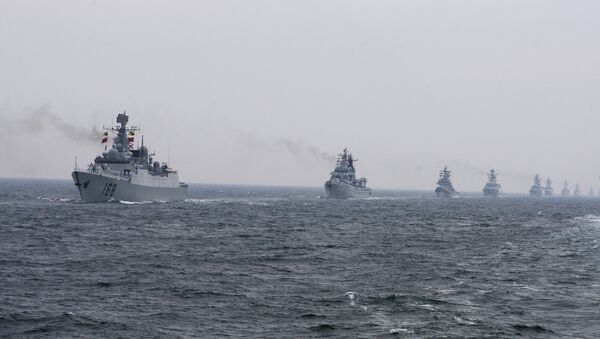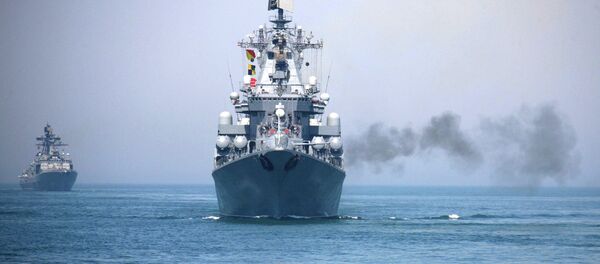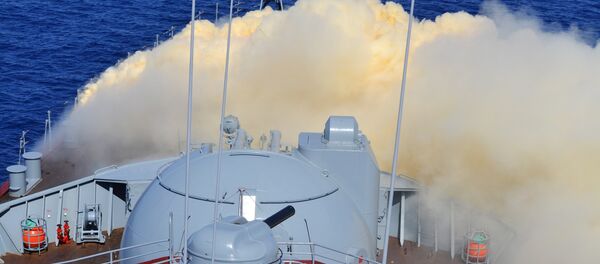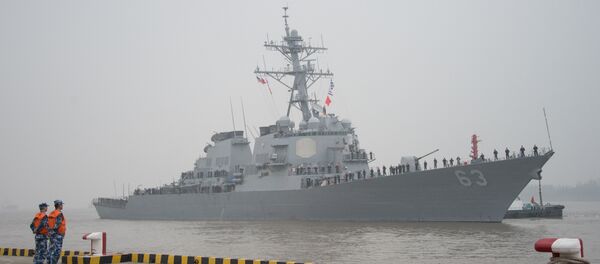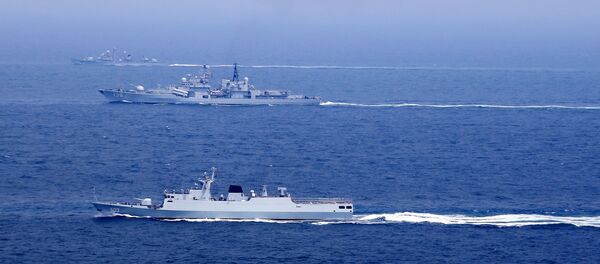The Chinese naval fleet, taking part in the joint military exercises, includes the Hefei guided-missile destroyer, the Yuncheng frigate, the Luomahu comprehensive supply ship, ship-borne helicopters and marines.
Take it to the Enemy's Heart
China’s decision to send its naval ships as far as to the Baltic Sea, which is the frontline of NATO expansion toward Russian borders, could have originated from a Chinese military strategy called “fanbian”, which was first introduced by a renowned Chinese military leader during World War II, military experts told Sputnik.
“As the United States continued its provocations in the South China Sea, China responded by joining Russia in naval drills on the doorsteps of NATO in the Baltic Sea. This is called the ‘fanbian’ strategy used by Chinese Marshal Luo Ronghuan during the Second World War,” Ni Lexiong, a military expert at the University of Politics and Law in Shanghai, told Sputnik.
The Shanghai-based military expert believes China employed the same strategy by sending its naval ships to the Baltic Sea as a military diversion against pressure from the US Navy in the South China Sea. In May, US Warships sailed within 12 miles of disputed islands in South China Sea, where China continued to build up its military presence.
The current international conditions and common strategic interests also drove China and Russia closer to each other, Ni suggested.
“It’s like China and Russia have their backs against each other now. They need to lean on each other for support to deal with hostilities from different fronts,” he said, adding that the two countries are trying to “keep each other warm by sticking together.”
China's Growing Maritime Interests
However, following more than 30 years of explosive economic growth, China’s maritime interests continued to expand, and the sea route through the Strait of Malacca is being viewed as a “lifeline” to the Chinese economy with over 80 percent of the nation’s crude oil imports from the Middle East and Africa having to go via this route.
As a result, Chinese leaders are determined to build a strong navy to safeguard China’s economic interests, Ni explained.
“Chinese President Xi Jinping, as a son of the revolutionists who founded the current regime, is very focused on upgrading China’s military. I believe the PLA Navy can catch up or even surpass the US Navy in 10-20 years,” he said.
Global Presence of Chinese Navy
As the capabilities of the PLA Navy continue to improve, the world is expected to see increased presence of Chinese naval fleets, experts told Sputnik.
“China is building a ‘blue-water’ navy capable of long-range missions. In the future, I believe Chinese naval fleets will frequently appear in the north Atlantic, entering the key regions for Western countries in Europe and America,” Guo Peiqing, executive director of the Institute of Polar Law and Policy at the Ocean University of China, told Sputnik.
“Conducting the exercise in the Baltic allows China to send other messages that it is a global power. It is capable of doing the same things in European waters which European powers such as the United Kingdom and France do in the Asia-Pacific,” James Goldrick, a non-resident fellow at the Lowy Institute for International Policy who served in the Royal Australian Navy for almost 40 years before retiring in 2012, told Sputnik.
Earlier this month, China established its first overseas naval base in Djibouti, a country on the Horn of Africa around the Gulf of Aden.
The Australian expert pointed out that, while China remains in many ways well behind the US Navy in overall capability and behind the Russian Navy in many warfare areas, it is advancing rapidly and the scale of its operations is increasing steadily.
Goldrick argued the PLA Navy’s effective capability to conduct extended deployments is now greater than the resource-constrained Russian Navy, adding that it is likely to become more obvious in the next few years, particularly after the first Chinese-built aircraft carrier becomes fully operational.

